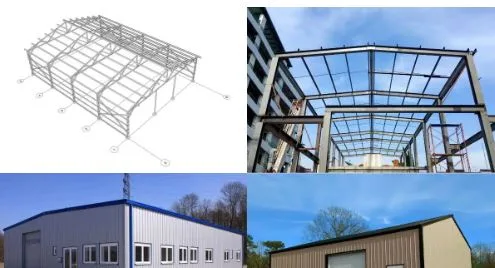Types of Foundations for Steel Buildings in Canada
Steel buildings are becoming a popular option for homeowners throughout Canada, providing durability, flexibility, and lower overall costs. Regardless of what it is being used for, whether a storage building on a farm, a warehousing facility, or as an independent garage for your home, these are perfect. However, one of the most important factors that will affect not only stability but also long-lasting use is its base.
The absence of a foundation means that the building is supported solely by wooden piles, and it can withstand heavy snow loads, frost, and shifting soils. It is essential to understand the various types of foundations so that you can make an informed decision.
Types of Foundations for Steel Buildings in Canada
Concrete Slab Foundation
The traditional way of erecting steel buildings, such as steel shop buildings, is in Canada. The process of pouring one solid sheet on the ground creates this slab, which is not only the base but also a support for your building.
Advantages:
Offers a long-lasting, no-maintenance surface.
Ideal for small to medium-sized buildings, including stores, light industrial facilities, and shops.
Fast and relatively cheap to implement.
Considerations:
Good insulation is crucial in preventing frost heaving in colder areas.
Not great for really unstable or sloping soil.
Pier Foundation
“Pier foundations” are deep, structural supports that are constructed below a house to help bear the weight of the structure, similar to poles. The steel building is raised slightly above the ground.
Advantages:
Priced for smaller steel buildings, sheds, or agricultural structures.
Permits air circulation under the shed for a healthy environment.
Great in fields with terrain.
Considerations:
Lower carrying capacity than full slabs.
More will be given after functional floor covering care.
Perimeter Wall Foundation (Stem Wall)
The perimeter wall foundation, a.k.a. the stem wall foundation, is formed by erecting a concrete wall around the building and pouring floor slabs or piers at the centre of the interior.
Advantages:
Allows great load distribution and is perfect for bigger steel buildings.
Preserves building edges from frost and soil movement.
Provides flexibility for using crawl spaces or basements.
Considerations:
Higher cost/forms than slab foundations.
Demands skilled labor and careful organization.
Floating Slab Foundation
The floating slab is intended to “float” on the soil rather than be anchored into it. It is commonly used for garages and smaller steel buildings.
Advantages:
Easy to build, and less costly than deeper founds.
Possible to reinforce with insulation for enhanced protection and performance.
Considerations:
Subject to movement in poor soil conditions.
May need special consideration in frost heave areas.
Pile Foundation
Pile foundation is made of long steel, wood, or concrete members installed and driven into the ground to support a structure at considerable depth when the soil available at shallow depth is not suitable to withstand the load.
Advantages:
Great for high-rise industrial steel buildings with bad soil stability.
Provides a permanent, stable base and lasts the life of the installed pavement.
Great for waterfront or flood-prone areas.
Considerations:
Very expensive in terms of foundations.
Needs heavy stuff and technicians to do it.
Conclusion
A steel building is only as stable as its foundation, so it’s important to know what type of base you need. In Canada, with diverse soil types and weather climates, slab, pier (either drilled or driven), perimeter wall, floating slab, and pile foundations are typical options that can be considered for different needs. Homeowners have the option to choose the best foundation for their steel building, based on climate, soil type, building size, and budget, so that it will endure for decades. With the care and expertise of professionals, your base is not only a solid foundation, but a promise for a lifetime.





